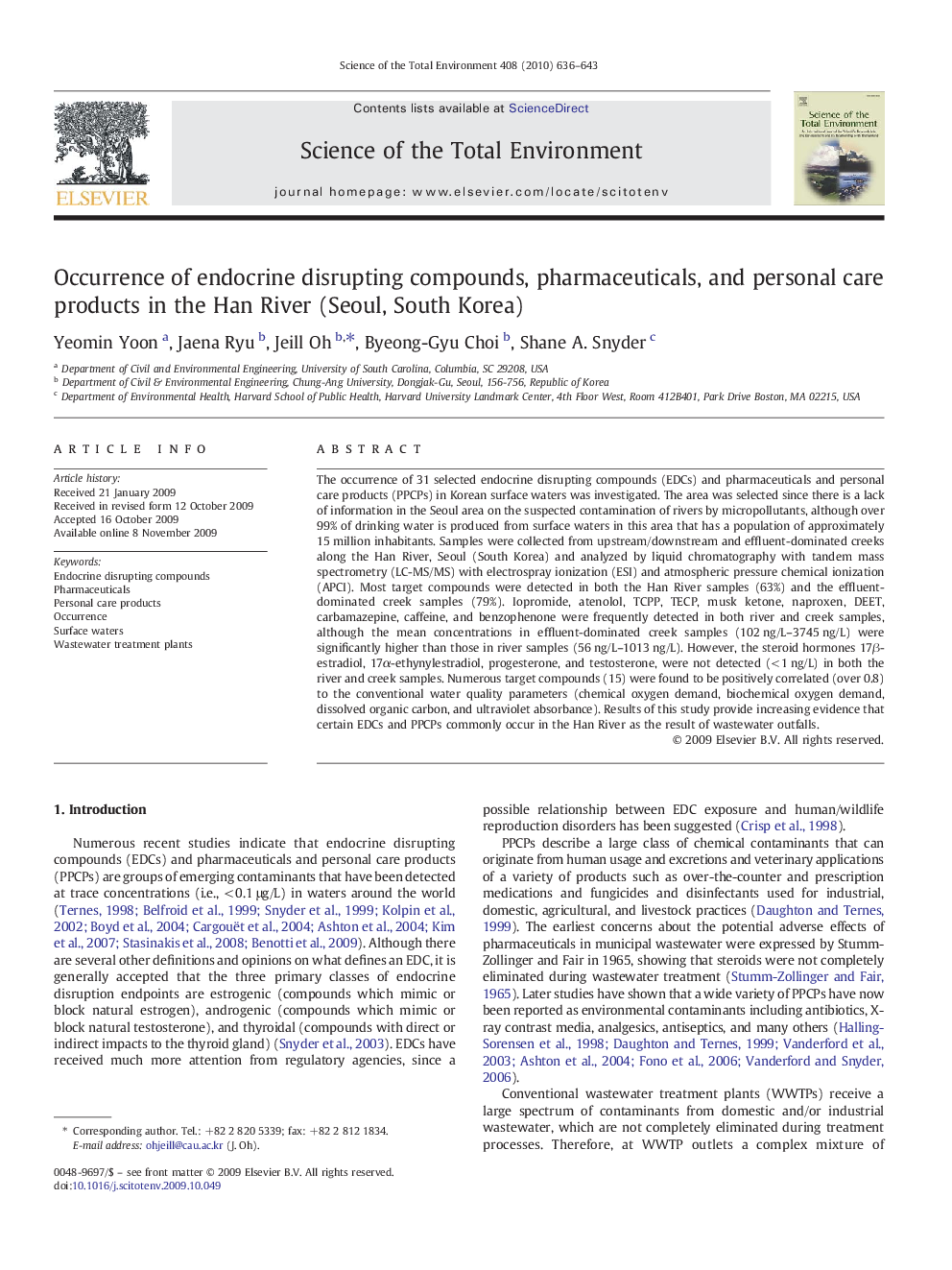| Article ID | Journal | Published Year | Pages | File Type |
|---|---|---|---|---|
| 4430708 | Science of The Total Environment | 2010 | 8 Pages |
The occurrence of 31 selected endocrine disrupting compounds (EDCs) and pharmaceuticals and personal care products (PPCPs) in Korean surface waters was investigated. The area was selected since there is a lack of information in the Seoul area on the suspected contamination of rivers by micropollutants, although over 99% of drinking water is produced from surface waters in this area that has a population of approximately 15 million inhabitants. Samples were collected from upstream/downstream and effluent-dominated creeks along the Han River, Seoul (South Korea) and analyzed by liquid chromatography with tandem mass spectrometry (LC-MS/MS) with electrospray ionization (ESI) and atmospheric pressure chemical ionization (APCI). Most target compounds were detected in both the Han River samples (63%) and the effluent-dominated creek samples (79%). Iopromide, atenolol, TCPP, TECP, musk ketone, naproxen, DEET, carbamazepine, caffeine, and benzophenone were frequently detected in both river and creek samples, although the mean concentrations in effluent-dominated creek samples (102 ng/L–3745 ng/L) were significantly higher than those in river samples (56 ng/L–1013 ng/L). However, the steroid hormones 17β-estradiol, 17α-ethynylestradiol, progesterone, and testosterone, were not detected (< 1 ng/L) in both the river and creek samples. Numerous target compounds (15) were found to be positively correlated (over 0.8) to the conventional water quality parameters (chemical oxygen demand, biochemical oxygen demand, dissolved organic carbon, and ultraviolet absorbance). Results of this study provide increasing evidence that certain EDCs and PPCPs commonly occur in the Han River as the result of wastewater outfalls.
